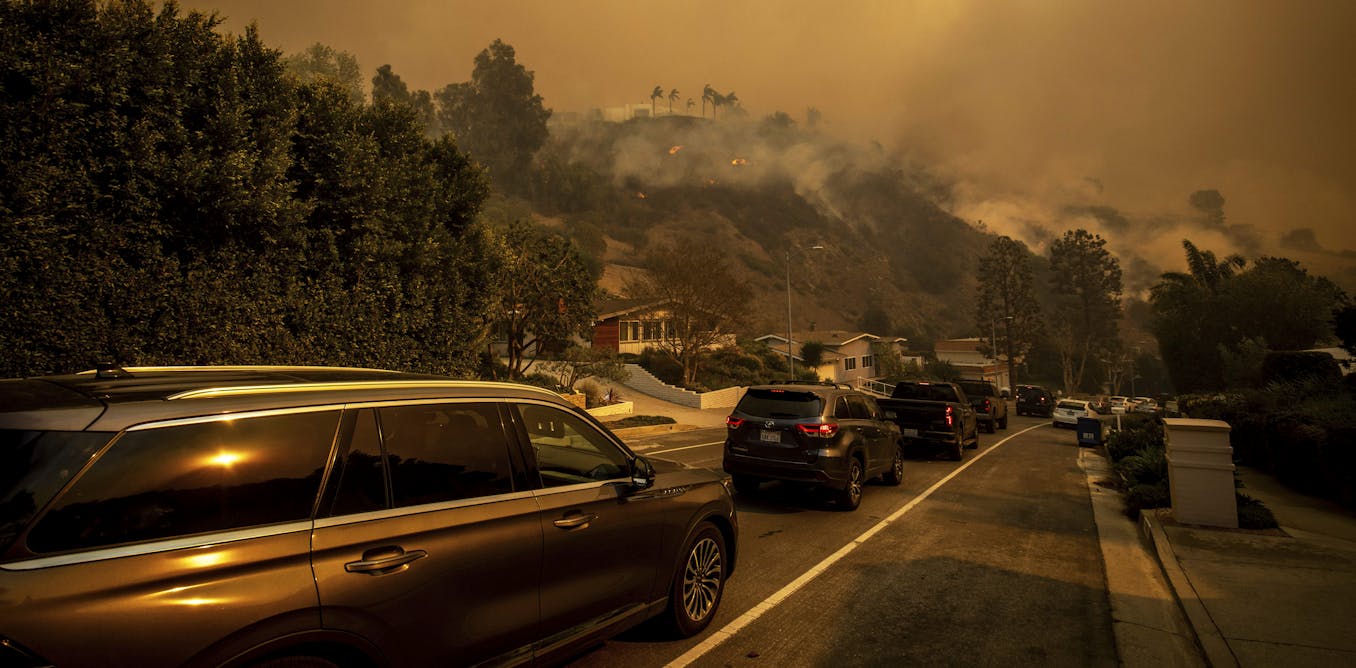Hidden Dangers: How Wildfire Smoke Invades Our Homes and Affects Health
As wildfire season intensifies, the smoke infiltrating our homes poses serious health risks that can last long after the flames have been extinguished. The hidden dangers of wildfire smoke are often underestimated, but understanding how it enters our living spaces and impacts our health is crucial for safeguarding ourselves and our loved ones.
Understanding Wildfire Smoke
Wildfire smoke is a complex mixture of gases and fine particulate matter produced by burning vegetation. These particles can travel vast distances, often making their way into homes, schools, and workplaces. The composition of wildfire smoke includes:
- Carbon monoxide: A colorless, odorless gas that can interfere with the body’s ability to transport oxygen.
- Volatile organic compounds (VOCs): These chemicals can irritate the eyes, nose, and throat and may have long-term health effects.
- Particulate matter (PM): Tiny particles that can penetrate deep into the lungs, causing respiratory issues and aggravating existing conditions like asthma and COPD.
The danger of wildfire smoke is compounded by the fact that these particles can linger in the air for extended periods, even after the fires have been extinguished. This means that individuals may be exposed to harmful toxins long after they believe they are safe.
How Wildfire Smoke Enters Our Homes
Many people assume that the walls of their homes provide a strong barrier against outdoor pollutants. However, wildfire smoke can invade our living spaces through several channels:
- Open windows and doors: Even brief openings can allow smoke to seep in, especially during periods of high wind or during the active burning of nearby fires.
- HVAC systems: Central heating and air conditioning units can draw smoke into homes, circulating it throughout living spaces.
- Cracks and crevices: Small gaps around windows, doors, and other openings can be pathways for smoke to enter.
It’s essential to recognize that even if you can’t see or smell the smoke, harmful particles may still be present in your home.
The Health Impacts of Wildfire Smoke
The health risks associated with wildfire smoke can be severe and long-lasting. Exposure to smoke can lead to a range of health issues, including:
- Respiratory problems: Inhaling fine particles can lead to coughing, wheezing, and shortness of breath.
- Cardiovascular issues: Smoke exposure has been linked to heart attacks and other cardiovascular problems.
- Neurological effects: Studies suggest that long-term exposure to particulate matter can be associated with neurological disorders.
- Worsening of chronic conditions: Individuals with asthma, COPD, and other chronic respiratory diseases may experience exacerbated symptoms.
Particularly vulnerable populations include children, the elderly, and those with pre-existing health conditions. It’s crucial to take proactive steps to minimize exposure to wildfire smoke.
Essential Tips for Cleaning and Safeguarding Your Home
When wildfire smoke infiltrates your home, it’s essential to take immediate action to clean and protect your living space. Here are some expert-recommended tips:
1. Seal Off Your Home
Before you start cleaning, it’s vital to minimize the smoke entering your home:
- Close all windows and doors.
- Seal gaps and cracks with weather stripping or caulk.
- Use heavy curtains or drapes to block smoke from coming through windows.
2. Use Air Purifiers
Investing in high-efficiency particulate air (HEPA) filters can significantly improve indoor air quality. These purifiers can trap fine particles and allergens, reducing the concentration of harmful substances in the air.
3. Change HVAC Filters
If you have a central air conditioning system, replace the filters regularly. Consider using filters rated for smoke and particulate matter, as these can capture more harmful particles.
4. Clean Surfaces Thoroughly
Wildfire smoke can leave residues on surfaces. Ensure to:
- Dust and wipe down all surfaces with a damp cloth.
- Wash curtains and upholstery that may have absorbed smoke.
- Vacuum carpets and rugs with a vacuum equipped with a HEPA filter.
5. Monitor Air Quality
Keep an eye on local air quality reports. There are various apps and websites that provide real-time updates on air pollution levels, helping you make informed decisions about when to stay indoors.
Long-Term Considerations for Homeowners
As wildfires become more frequent and intense due to climate change, it’s essential for homeowners to consider long-term solutions:
- Home Design: Consider investing in designs and materials that are more resistant to smoke infiltration.
- Landscaping: Create defensible space around your home to reduce the risk of smoke and fire damage.
- Community Engagement: Join or support local initiatives aimed at wildfire prevention and preparedness.
By taking proactive measures and being aware of the hidden dangers of wildfire smoke, you can protect your home and health. Remember, safeguarding against smoke isn’t just about immediate reactions; it’s about fostering a long-term mindset toward environmental resilience.
Conclusion
Protecting our homes from the hidden dangers of wildfire smoke requires awareness and action. With the right strategies in place, we can mitigate the health risks associated with smoke exposure and create safe living environments for ourselves and our families. As we navigate this wildfire season, let’s prioritize our health and well-being and remain vigilant against the threats that linger long after the flames have been doused.
See more WebMD Network



